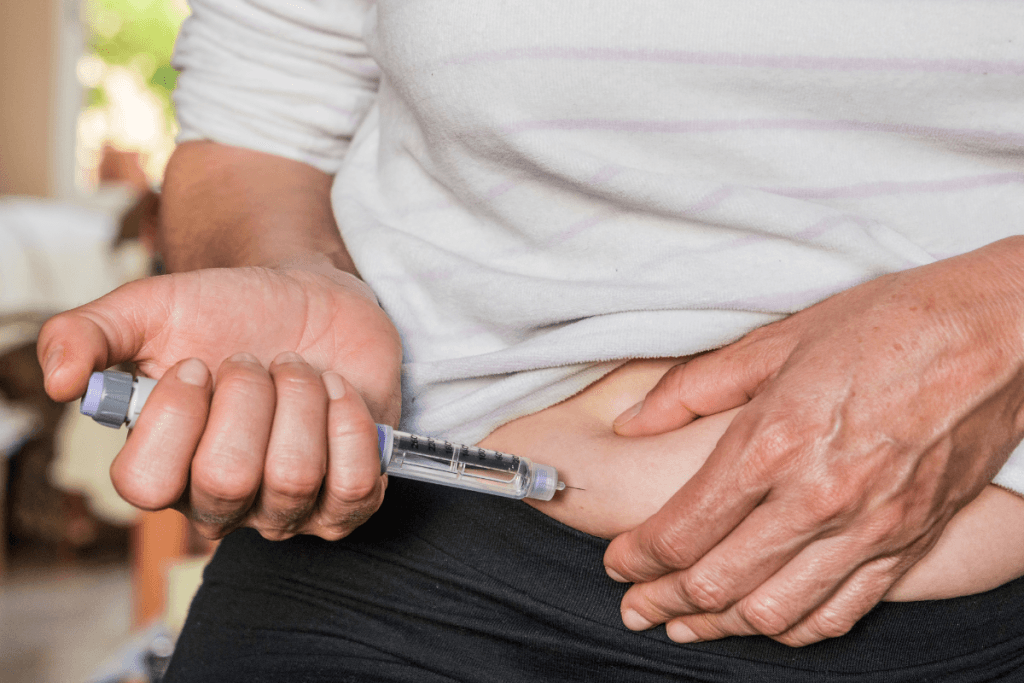Obesity remains a global health challenge, with rising prevalence and increasing comorbidities such as type 2 diabetes and cardiovascular disease. As a GLP-1 receptor agonist, Wegovy provides healthcare professionals with an effective, evidence-based treatment for chronic weight management. By targeting appetite regulation and metabolic function, it offers a structured approach to sustained weight loss, reducing the reliance on surgical interventions.
For practitioners, understanding Wegovy dosing, efficacy, and safety profile is critical for optimizing patient outcomes. As demand for non-surgical obesity treatments grows, so does the importance of addressing potential side effects of the medication and ensuring accessibility by considering cost factors.
The Role of Wegovy in Obesity Management
With obesity classified as a chronic disease, long-term therapeutic strategies are essential. Wegovy is an FDA-approved medication designed for patients with a BMI of 30 or higher or a BMI of 27 or higher with weight-related health risks such as hypertension or dyslipidemia. Unlike traditional weight-loss medications, it works by mimicking glucagon-like peptide-1 (GLP-1) to regulate appetite and food intake.
Mechanism of Action: Appetite Regulation and Metabolic Benefits
The active ingredient in Wegovy, semaglutide, influences key metabolic pathways:
- Suppressing Appetite: It interacts with the brain’s hunger centers, reducing cravings and caloric intake.
- Slowing Gastric Emptying: This prolongs satiety, helping patients feel full longer.
- Enhancing Insulin Sensitivity: Improved glucose control can benefit patients with prediabetes or type 2 diabetes.
This combination makes Wegovy weight loss therapy a valuable option for long-term obesity care.
Clinical Efficacy: What Studies Show About Wegovy Weight Loss
Clinical trials have demonstrated Wegovy’s superior efficacy compared to lifestyle interventions alone. The STEP (Semaglutide Treatment Effect in People with Obesity) trials found that patients using Wegovy alongside lifestyle modifications experienced an average weight reduction of 15% or more over 68 weeks.
Key Findings for Healthcare Providers
- Greater weight loss than placebo – Participants achieved a mean weight reduction of 14.9% compared to 2.4% in the placebo group.
- Sustained results – Long-term adherence showed continued weight management benefits.
- Improvements in metabolic markers – Reductions in HbA1c, blood pressure, and lipid levels were observed.
These outcomes reinforce Wegovy’s role as an advanced solution in obesity treatment protocols.
Optimizing Wegovy Dosing for Patient Outcomes
A structured Wegovy dosing schedule is essential to enhance tolerance while minimizing gastrointestinal discomfort.
Recommended Dosing Schedule
- Week 1-4: 0.25 mg once weekly
- Week 5-8: 0.5 mg once weekly
- Week 9-12: 1 mg once weekly
- Week 13-16: 1.7 mg once weekly
- Maintenance Dose: 2.4 mg once weekly
Gradual dose escalation reduces the likelihood of nausea, vomiting, or diarrhea. Patient education on adherence is critical to achieving optimal weight loss without unnecessary interruptions.
Managing Wegovy Side Effects in Clinical Practice
While generally well-tolerated, Wegovy can present side effects that healthcare providers should monitor.
Common Side Effects
- Gastrointestinal symptoms – Nausea, vomiting, diarrhea, and constipation are frequent but often temporary.
- Fatigue and dizziness – Some patients report transient energy shifts during treatment initiation.
Serious but Rare Adverse Events
- Pancreatitis risk – Severe, persistent abdominal pain may indicate inflammation.
- Gallbladder complications – Rapid weight loss may contribute to gallstone formation.
- Hypoglycemia – Patients on insulin or sulfonylureas require blood sugar monitoring.
Proactive management strategies, such as adjusting the dosing schedule, providing dietary recommendations, and ensuring adequate hydration, can mitigate these effects.
Comparing Wegovy to Other GLP-1-Based Therapies
Understanding how Wegovy compares to other GLP-1 receptor agonists is crucial for clinical decision-making.
Weight Loss Superiority
Compared to liraglutide (Saxenda®), Wegovy has shown greater weight reduction, leading to improved long-term outcomes.
Adherence and Convenience
A once-weekly injection improves compliance compared to daily administration options like liraglutide.
Side Effect Profile
Although Wegovy shares similar gastrointestinal side effects with other GLP-1 medications, gradual dosing adjustments improve patient tolerance.
These distinctions reinforce Wegovy’s role as a leading weight loss therapy for obesity management.
Key Considerations for Healthcare Providers Using Wegovy
To optimize treatment success, practitioners should follow structured protocols for patient selection, monitoring, and lifestyle integration.
Identifying Ideal Candidates
- BMI criteria: Patients with BMI ≥30 or ≥27 with comorbidities.
- Screening for contraindications: Avoid use in patients with a history of pancreatitis or medullary thyroid carcinoma.
Monitoring for Efficacy and Safety
- Regular follow-ups to assess weight loss progress and side effects.
- Adjusting treatment plans based on individual responses.
Integrating Lifestyle Modifications
- Nutritional counseling to complement pharmacologic intervention.
- Behavioral support to reinforce sustainable habits.
Takeaways
For healthcare professionals, Wegovy represents a major advancement in obesity treatment, combining GLP-1 therapy with metabolic benefits to achieve long-term weight management. Its ability to regulate appetite, support weight loss, and improve metabolic markers makes it a cornerstone in non-surgical obesity care.
Optimizing dosing and proactively managing Wegovy side effects ensures safer and more effective treatment outcomes. Additionally, addressing the Wegovys cost concerns can enhance patient accessibility and adherence.
As obesity prevalence rises, Wegovy remains a pivotal tool in the evolving landscape of weight loss therapy, offering clinicians an evidence-based solution for sustainable results.
Discover how Wegovy® can support your practice by visiting our Product Page, where professionals can explore an extensive range of high-quality dermal fillers.
Frequently Asked Questions (FAQs)
How long does it take for patients to see results with Wegovy?
Most patients begin to notice weight loss within the first few weeks of treatment, with significant reductions typically occurring by the three-month mark. Full benefits are usually seen after six to twelve months of continuous use.
Can Wegovy be used in combination with other weight-loss medications?
Wegovy is generally used as a standalone therapy for chronic weight management. Combining it with other weight-loss medications should be done with caution and under clinical supervision, as it may increase the risk of side effects.
Is Wegovy safe for long-term use?
Yes, clinical trials support the long-term use of Wegovy for weight management. However, patients should be monitored regularly for side effects, metabolic changes, and adherence to ensure ongoing efficacy and safety.






